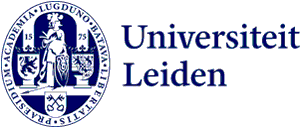
Where does this Inca language come from? Verb conjugations should provide some answers
When university lecturer Martine Bruil was on exchange in Ecuador as a teenager, she fell in love with the area's ancient languages. Now, more than 20 years later, she is starting a research project on the kinship of the language Awapit with the Quechua language that was spread by the Incas.
Latin America is teeming with pre-Columbian languages and language families, some of them with only a few hundred speakers left. The best known of these is the Quechua family, descended from the administrative language of the Incas. 'We don't know if that language family is related to anything, but the more we look at other languages in the region, the more we think: this cannot be a coincidence,' Bruil says.
Endless strings of syllables
This prompted Bruil to use her XS grant from NWO to look into another language family in the border region of Ecuador and Colombia: Barbacoa. 'I’m going to research the verb morphology of Awapit, a small Barbacoa language with a few thousand speakers,' she explains. ‘A grammar has been written about it, but the language is so complicated that it isn’t always clear how elements are related. For example, verbs can have more than ten syllables after them, which makes them quite a bit more complicated than our stem + t.'
In Awapit, speakers can choose a particular verb form to express, for example, the extent to which they were involved in an event. 'If it rained on you, you would use a different verb form from if you only saw it rain,' Bruil explains. 'But to really understand the system, you need to understand how all these different word endings are related.'
Own identity
That is exactly what she will be doing in the coming period. Using 16 hours of previously recorded material and new interviews that have yet to be conducted, Bruil wants to describe as precisely as possible how verb formation in Awapit works. Ultimately, this should serve as a stepping stone for a larger study of the language's kinship with Quechua. 'I am doing this project in close cooperation with the Awá community,' says Bruil. 'For example, they currently have very little teaching material in their own language. A study like this can help more children learn to speak the language or be taught in it.'
Big and small history
The research could also have added value from a historical perspective. 'If we could conclude that Barbacoa is related to Quechua, we would have to look at the whole history of the Andes differently,' Bruil speculates aloud. At the present time we don't know where Quechua comes from. If it turns out to have a connection to Barbacoa, then we will have found a piece of that puzzle. I would love that, also because my husband comes from this area and so my children have genes from the region. That makes this history even more relevant for me.'
